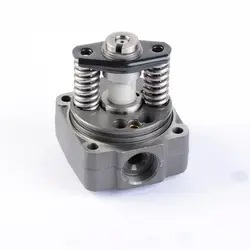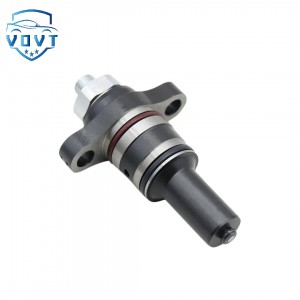Good Price Diesel Pump Head Rotor 146402-0820 Fuel Injection Pump Elements Engine Spare Parts
products description
| Reference. Codes | 146402-0820 |
| Application | / |
| MOQ | 2PCS |
| Certification | ISO9001 |
| Place of Origin | China |
| Packaging | Neutral packing |
| Quality Control | 100% tested before shipment |
| Lead time | 7~15 working days |
| Payment | T/T, L/C, Paypal, Western Union or as your requirement |
What are the functions and key features of the pump head?
1. The core function of the pump head
Fuel pressurization
The low-pressure fuel (usually from the fuel tank, with a pressure of 0.5-5bar) is pressurized to high pressure (depending on the system type, the pressure range is 500-2500bar or more) through mechanical movement (such as plunger reciprocation, gear meshing), providing sufficient power for the injector to atomize the fuel - the higher the pressure, the finer the fuel atomization, the more complete the combustion, and the better the engine power and economy.
Quantitative fuel supply
According to the engine operating conditions (such as speed, load, throttle opening), by adjusting the effective stroke of the plunger (mechanical pump) or the electronically controlled flow valve (common rail pump), the fuel supply per unit time is accurately controlled. For example: the fuel supply is small at idle speed, and the fuel supply increases at high speed and high load to ensure that the power output matches the demand.
Timed fuel supply
The start time of fuel pressurization is controlled through the timing mechanism (such as camshaft phase, roller body height, eccentric shaft), ensuring that the injector sprays fuel at a specific phase of the piston compression stroke (such as before the compression top dead center), avoiding early injection causing knocking or late injection causing incomplete combustion, and optimizing combustion efficiency and emissions.
Stable pressure output (unique to common rail pumps)
The pump head of the common rail system needs to cooperate with the pressure sensor and ECU to adjust the fuel supply in real time, maintain the pressure in the common rail pipe stable (not affected by engine speed fluctuations), support "flexible injection" (pre-injection, main injection, post-injection), and further reduce noise and emissions.
Anti-backflow and oil cut-off control
Through the oil outlet valve and other components, the high-pressure oil circuit is quickly cut off at the end of the oil supply to prevent the fuel from flowing back to the pump head and avoid dripping of the injector (dripping will cause fuel waste and increase carbon deposits), while ensuring that the oil supply is terminated quickly and without residue.
2. Key features of the pump head
High-pressure tolerance
The core components (plunger, plunger sleeve, pump body) need to withstand extremely high pressure (up to over 2500bar), so high-strength alloy materials (such as chromium-tungsten-manganese steel, high-speed steel) must be used, and the hardness must be increased by heat treatment such as quenching and nitriding (the surface hardness can reach HRC60 or above) to avoid deformation or rupture under high pressure.
Precision matching
The matching clearance of the plunger and plunger sleeve, the oil outlet valve and the valve seat and other matching parts must be controlled at 0.001-0.003mm to ensure high-pressure sealing (no fuel leakage) and smooth movement (reduced friction loss). This precise matching is the reason why "matching parts cannot be disassembled and replaced" - the matching parts need to be replaced as a whole after wear.
Dynamic responsiveness
It is necessary to quickly adapt to changes in engine operating conditions: for example, the fuel supply and pressure can be instantly increased during rapid acceleration, and the response delay must be controlled at the millisecond level, otherwise it will cause power lag; the common rail pump also needs to respond to the pressure command of the ECU in real time, and the pressure regulation accuracy must be within ±5bar.
Wear and corrosion resistance
Moving parts such as plungers and gears are subject to long-term high-frequency friction (the reciprocating frequency of plungers can reach thousands of times/minute), and wear resistance needs to be improved through processes such as surface chrome plating and molybdenum spraying; at the same time, sulfur and moisture in fuel may corrode metals, so the parts need to have corrosion resistance (such as stainless steel or anti-corrosion coating).
Structural rigidity and sealing
As the bearing base, the pump body needs to have sufficient rigidity (to prevent deformation under high pressure), and ensure absolute sealing of low-pressure and high-pressure oil circuits through precision-machined sealing surfaces (such as O-rings and metal cones) to avoid fuel leakage causing pressure drop or environmental pollution.
Adaptability and compatibility
It needs to adapt to different engine types (such as diesel engines, gasoline engines, naturally aspirated or turbocharged), and be compatible with different fuel qualities (such as low-sulfur diesel and biodiesel), and maintain stable performance under harsh working conditions such as high temperature and vibration.























